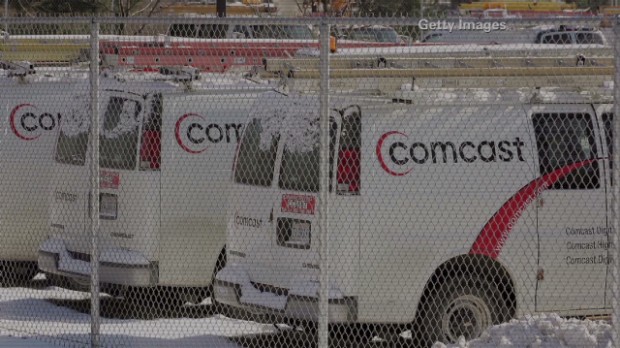You may remember the famous "1984" commercial introducing Macintosh personal computers. In the ad, "Apple" is an iconoclastic young heroine who hurls a hammer at a giant screen broadcasting "Big Brother" (IBM) lecturing to a legion of followers.
Indeed, Apple Inc. (Nasdaq: AAPL) vs. International Business Machines Corp. (NYSE: IBM) was one of the bitterest tech rivalries of the past 30 years.
But instead of David battling Goliath to the death, the two are now joining forces in a bold new pact.
It's a good deal for both companies... And today I'll reveal which stock will end up as the better buy - and make it a great deal for you...
Why IBM Is "Back"At the time of "1984" - and of the 1981 newspaper ad in which Apple "welcomed" IBM to the PC marketplace - Big Blue was the "Goliath" of the computer industry, a global giant that had already been around for decades. It catered to Fortune 500 companies and government agencies that needed industrial-strength computing.
"David" was a brash Silicon Valley startup whose PC breakthroughs appealed to individuals and small companies. It was the go-to company for creative types like graphic designers and photographers.
The tech world has changed in innumerable ways since the 1980s - we no longer talk about IBM "clones" anymore, for one thing - and both of these companies are now true corporate titans.
In fact, by market value, Apple is the largest company in the world.
And while IBM has since sold off its PC business to Lenovo Group Ltd. (OTCMKTS ADR: LNVGY), it remains a major force, especially in the so-called "enterprise" market. Its huge corporate and government clients - including 80% of the Fortune 500 - pay dearly for IBM's high-performance computing services.
IBM counts some 1,000 universities and 2,215 companies as business partners. Its list of global customers runs dozens of pages and includes some of the world's largest organizations.
In recent years, IBM has invested more than $24 billion to bolster its offerings of Big Data analytics; you likely know about its marquee Big Data computer, the "Jeopardy!"-winning Watson. It's also spent roughly $7 billion on cloud-computing initiatives.
And it boasts what may be the world's largest suite of software and services operations. Just in this year's first quarter, IBM's sales of software and services totaled some $15 billion.
Add it all up and you have a sprawling worldwide company that is involved in virtually every aspect of corporate computing.
But one area in which it has a glaring weakness is the fast-moving mobile world. IBM is a virtual no-show in smartphones and tablets.
And that's where this historic agreement comes in. Instead of launching its own mobile division, IBM has found a new best friend in the mobile world's clear technology leader.
Completing the PuzzleThrough the partnership, which was announced last month, IBM will use its highly capable sales force to sell iPhones and iPads to its corporate customers. IBM will also develop cloud services for Apple's iOS mobile operating system.
For its part, Apple will be developing and selling business apps on its App Store. It will also be offering tech support for its mobile devices through a special corporate AppleCare program.
It's a deal that addresses both companies' weaknesses: IBM's deficit in mobile solutions and Apple's lackluster performance in the corporate sector.
Apple, of course, turned the mobile industry on its ear back in 2007 with the launch of the iPhone.
Smartphones had existed for years. But the iPhone was so innovative - it played music, searched the Web, took photos and video, and served up hundreds of apps - that its release can be considered the device's birth.
And Apple's success in this area shows no sign of slowing down. In the first half of fiscal 2014, Apple sold nearly 94.75 million iPhones; compare that to the 85.22 million sold in the first half of 2013.
In the meantime, the company makes the only true enterprise-class tablet computer, the iPad. That means the device is sophisticated and tough enough to pass the rigorous requirements of Fortune 500 companies, top universities, and federal agencies.
In the last two quarters, Apple sold nearly 40 million iPads. That's an impressive number, but iPad sales are slowing; they were off 9% in the most recent quarter.
That's one of the reasons I think the recent Apple-IBM partnership is such a great deal for both of them. What we have here is the world's best enterprise sales channel throwing its weight behind the top enterprise tablet.
But that's not the only thing that makes this deal so intriguing...
Apple's Best Growth OpportunityWhile the team-up of IBM's sales force and Apple's devices is one for the ages, I don't think it's going to move the needle on mobile sales that much - at least not immediately.
Here's where I think the meat of the deal is: IBM and Apple have a goal to create more than 100 easy-to-use mobile apps that simplify how a wide range of professionals work.
And this part of the deal is being nearly ignored by Wall Street and the mainstream media, because they don't understand just how important the App Store is right now.
The App Store is Apple's fastest-growing product line. The company reports App Store sales as part of its iTunes software category, sales of which grew 15.4% to $4.5 billion in the most recent quarter. Compare that to sales growth of 10.6% for iPhones.
Apple CEO Tim Cook says the App Store is the company's key driver right now. To date, the App Store has had some 75 billion downloads.
Expect the first round of IBM-fueled business apps to be available this fall when Apple releases the newest version of its mobile software, iOS 8.
The apps will focus on IBM's expertise in analytics, data security, and device management. Basically, the apps will combine IBM's enterprise-level computing with Apple's elegant and easy-to-use consumer products.
As part of the alliance, IBM said its employees will provide on-site support and service for Apple products. The new system will be based on the AppleCare service sold to individual consumers and small businesses.
IBM said it plans to make more than 100,000 employees available to the Apple initiative. That's more than twice the size of Apple's total workforce.
I have been an AppleCare customer for many years and find this aspect particularly alluring. One of the reasons I buy a new MacBook every three years is to keep my AppleCare support current.
If IBM's technicians can provide that same level of service, they will have corporate mobile customers for life.
Here's the Winner, and WhyClearly, this is a great deal for both firms. It unites the best of both: IBM's Fortune 500 muscle with Apple's mobile leadership and innovation.
But if I had to choose between the two stocks, I'd go with AAPL every time.
Yes, IBM is a great company. But as we've discussed in the past, it's in the midst of a turnaround that may take several more quarters to play out.
Apple, on the other hand, has enormous momentum behind it - and the IBM pact is but one of several factors that will propel Apple's stock going forward.
Remember, this is a company that recently announced $30 billion in new stock buybacks and an 8% increase in its dividend.
It also recently completed a 7-for-1 stock split. Since hitting a two-year closing low in April 2013, AAPL is up 75%.
The stock trades at roughly $98.30 a share. I'm still projecting a split-adjusted price of $142.85 by mid-2016.
Yes, that's an aggressive projection for this former "David."
But Apple has proven repeatedly that it can continue to generate massive profits - and that it is not afraid of picking fights with other tech companies when such rivalries are to its advantage. Recall the "Get a Mac" campaign of 2006-2009 that took on PCs from Microsoft Corp. (Nasdaq: MSFT).
And that means Apple is the kind of strategic growth stock you can count on to help build your net worth for the long haul.
 NEW YORK (CNNMoney) If young people get hooked on Comcast cable in college, perhaps they'll pay the company for cable when they graduate.
NEW YORK (CNNMoney) If young people get hooked on Comcast cable in college, perhaps they'll pay the company for cable when they graduate.  Comcast: Poor service, good stock
Comcast: Poor service, good stock 



 Getty Images
Getty Images